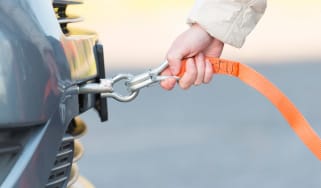Number plates explained: guide to UK registration plate system
They’re found on every road-legal car in the UK, but how does our number plate system work?
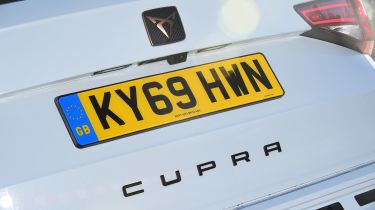
They may appear to be a random string of letters and numbers at first glance, but there’s more to the UK number plate system than meets the eye. Many drivers will be familiar with the modern registration plate format and how it can be used to determine the age of a vehicle, but there are other clues and rules that you may not be aware of.
In this guide, we’ll explain how the system works, what different letter and number combinations mean, as well as how to get your hands on a personalised registration plate.
What is UK number plate legislation?
It goes without saying that it’s a legal requirement to display number plates and this has been the rule since 1903. The Driver and Vehicle Licensing Agency (DVLA) administers and records all UK number plates, and places rules on what the plate must – and must not – contain.
While the majority of cars on the road use traditional rectangular number plates, the shape of the plate isn’t legally mandated – only the colour of the plate and size, font and colour of the text. Registration plates must be white at the front of the car, yellow at the rear and contain black lettering, in a unique and prescribed font called “Charles Wright, 2001”.
How does the number plate system work?
Since September 2001, UK registration plates feature seven characters, divided into three groups. Two letters are followed by two numbers and a further three letters: e.g. AB12 CDE.
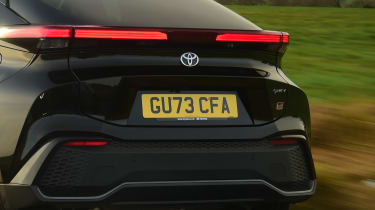
The first two letters indicate where the car was first registered. This is known as the plate’s ‘memory tag’ or its area code. A number plate starting with the letter ‘LA’, for example, denotes a car that was first registered in London, with the ‘L’ indicating London and the ‘A’ narrowing down the location further – in this case to the Wimbledon area. These area codes reflect the locations of long-closed DVLA regional offices, but the system remains.
The pair of numbers indicates when the car was registered, although the system isn’t as intuitive as you may think. Instead of changing once a year on January 1st, plates are updated every six months on September 1st and March 1st.
Cars registered between March 1st and August 31st use the last two digits of the year itself – i.e. ‘06’ for 2006, ‘19’ for 2019 or ‘24’ for 2024.
Cars registered between September 1st and the end of February of the following year, add 50 to the last two digits of the year. For example, a car registered on September 1st 2023 comes with a ‘73’ plate, as does a car registered on February 27th 2024.
The last three letters of a number plate under today’s system are completely random (although they never feature the letters ‘Q’ or ‘I’) and exist only to allow every registration issued to be unique. If you’re buying a new car that hasn’t been registered yet, the dealer may let you choose from several available registration plates.
Electric cars feature a vertical strip of green to the left of the characters to differentiate them from other vehicles.
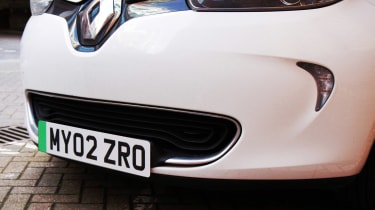
‘D’ number plates explained
If you see a car with a strange-looking number plate that features the letter ‘D’ sandwiched between six numbers, this indicates a diplomatic car operated by a foreign embassy, consulate or high commission. A letter ‘X’ in the same position denotes the car is registered to an embassy or consulate staff member who isn’t an actual diplomat.
Personalised number plates
Personalised number plates are big business today, but it wasn’t until 1989 that the DVLA realised there was serious money to be made from them and started to release plates deliberately designed to resemble words. Prior to that point, number plates that spelt out (or nearly spelt out) names and other phrases did so only by chance.
Personalised number plates range in price from a couple of hundred to several hundred thousand pounds. It’s usually possible to get yourself a plate with your initials on it relatively cheaply, but as a general rule of thumb, the closer a plate is to spelling out an actual name and the fewer characters it has, the more expensive it’ll be.
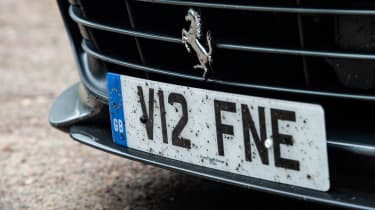
There are a few restrictions when it comes to personalised number plates, though. Plates that bear a resemblance to offensive and vulgar phrases aren’t issued, and you’re also not allowed to use a number plate that shows your car to be younger than it actually is.
If your name is Chris, for instance, and you own a car first registered in 2014, you won’t be allowed to apply the number plate ‘CR15 XYZ’ on it, as this would indicate the car is a year newer than it actually is. You can, however, make the car look older than it is, so the same plate would be fine on a 2016 car.
Finally, you’re not allowed to alter the specified spacing for number plates, italicise the letters or use any other fonts. Fitting coloured screws (to make a ‘6’ look like a ‘G’, for example) is also banned. These restrictions are all in place to ensure the uniformity and legibility of number plates, something that's particularly important for the number-plate recognition cameras used by the police and other authorities. Any breaches can see your car fail its MoT and net you a £1,000 fine.
The old system (1983-2001): prefix/suffix number plate
From 1983 to late 2001, number plates were made up of a single letter, followed by two or three numbers and three letters: A345 BCD, for example. The numbers 1-20 were held back for personalised number plates, although these followed the same format. The letter ‘A’ started things off in summer 1983, followed by ‘B’ plates in 1984.

In 1999, this alphabetical progression was made bi-annual – like it is now – in an effort to stem the rush consumers made to dealerships to secure themselves the latest plate every August. However, because the number plate’s appearance didn’t change, this didn’t really have the desired effect.
It wasn’t until the arrival of the ‘51’ plate when today’s system started in March 2001 that the dramatic August/September sales surge was prevented – although the current system was also implemented because the previous one had run out of unique combinations.
Under the old system, number plates beginning with the letters ‘I’ and ‘Z’ were reserved for Northern Irish cars, while ‘Q’ was used in situations where a vehicle’s age was unknown, or for kit cars that couldn’t be ascribed a specific registration date due to the nature of their construction.
History of UK number plates
France was the first country to mandate vehicle registration plates in 1893, but the UK followed shortly afterwards in 1903 with the introduction of the Motor Car Act. Since then, every new car has been required to wear a registration plate to use our roads legally.
Britain is one of the few countries to issue age-related registration numbers to its cars – a tradition dating back to 1963. Vehicle age was once denoted by a letter from A to Y found either at the beginning or end of the registration number. With its somewhat arcane nature, it’s astonishing that the system became so familiar – the only way to understand it was to memorise what each letter meant.
The present system was introduced in 2001. The fact that it uses numbers (e.g. 17 for a car built in 2017) means it should be easier to follow, but there are complications – particularly on cars registered between September and the end of February.
The biggest reason that the system was given a re-think was to do away with the annual plate change – an event that could radically skew car manufacturers’ yearly statistics. Why buy a car in July when you could have one with the latest registration mark on 1 August?
Under the current system, registration marks change twice a year, in March and September, so the rush to have the latest style of plate is less pronounced than it once was. Additionally, the number on a car’s registration plate now has less impact on value than the former annually changed letter.
Read our guides to the latest car tax rates and how to buy from a car dealership...
Recommended
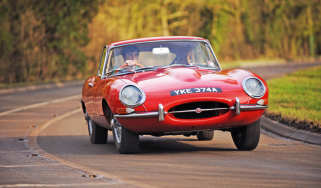
Classic car tax exemption: which historic vehicles qualify?
Most Popular
Tips & advice

Car dashboard warning lights: what does each symbol mean?

Electric car charging stations: public networks, charger types, apps and maps




